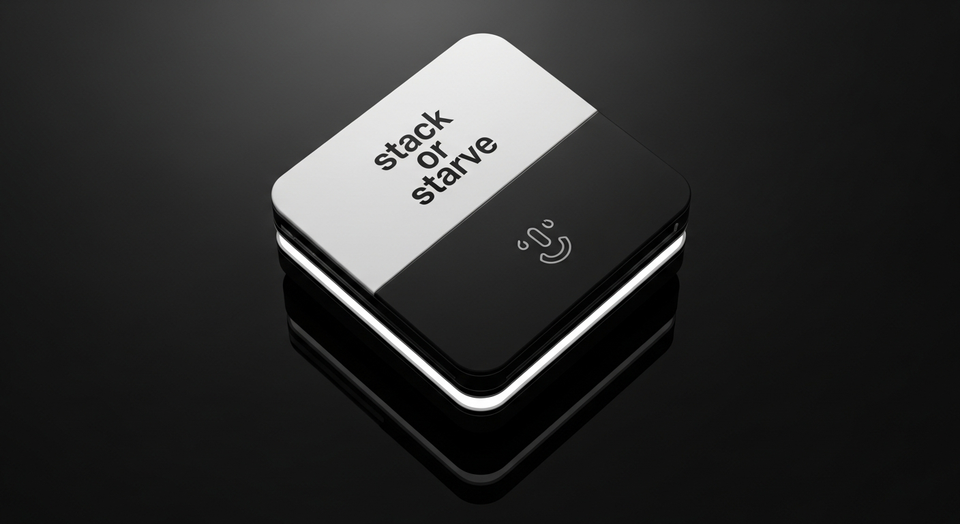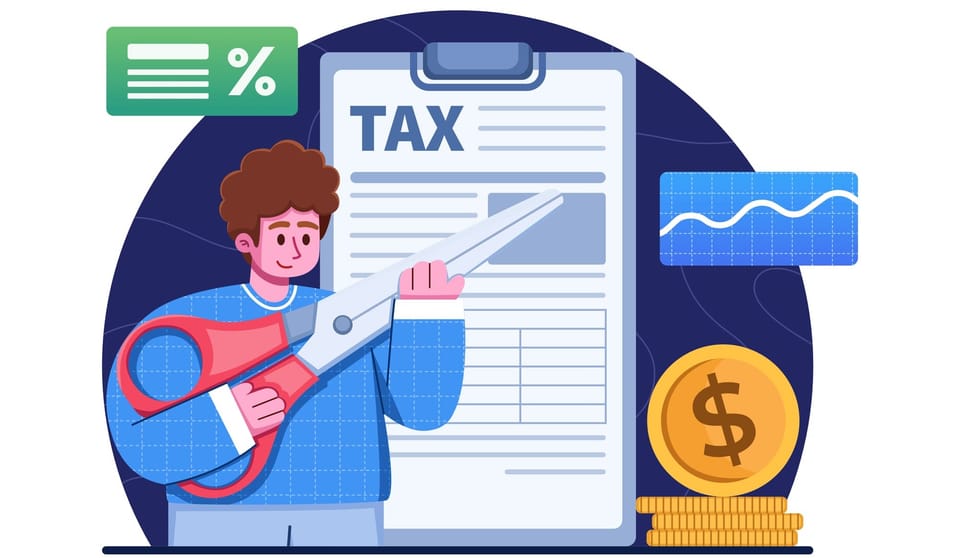The Points Illusion: Why Earning Isn’t Winning Until You Redeem Right
Everyone loves earning points. Almost no one knows what they’re actually worth. A million points can buy you $6,000 of flights - or $20,000, depending on how you burn them. The illusion isn’t in the earn; it’s in mistaking accumulation for strategy.


If You Only Had 60 Seconds to Read This Article
| Click Here 🤏🏻
We know too many businesses who think they’re winning because they earn tons of points, but earning is just the first inning.
The real value hides in how you redeem. 1 million points can be worth $6,000 or $20,000 depending on whether you cash out lazily or redeem strategically through airline partners and premium cabins. The illusion is mistaking accumulation for profit.
Cashback feels safe, but it caps your upside. You’re locking in 1.5% returns while others quietly pull 8-10x that through optimized redemptions. The difference isn’t spend - it’s IQ. CEOs who equate simplicity with smart are paying a hidden tax on convenience.
The real game is earn-to-burn ratio: A company earning 1.5x per dollar but redeeming at 3¢ per point earns more than one earning 3x but burning at 1¢. That spread is pure yield, and it compounds. Every dollar you spend has a return profile - you’re either extracting it or donating it back to the banks.
Stop hoarding, stop cashing out, and start redeeming with intent. Points are a depreciating asset that only make money when they move. The win isn’t having a million points; it’s turning them into $20,000 of flights your business actually uses. Earning isn’t winning until you redeem right.
Everything else you need to know is just below 👇🏻
🎞️: Powered by NotebookLM @ UpNonStop
The False God of the Earn Side
Most small business owners treat points like revenue. They obsess over how fast they’re earning and what cards rack up the biggest bonuses, as if “1.5x on everything” is the trophy. But the earn rate means nothing if you don’t know how to spend those points well.
Every company that brags about earning a million points a year is bragging about a balance sheet entry - not a win. The only number that matters is your return on redemption. Because in the world of travel rewards, one million points can be worth $6,000 - or $20,000. The difference isn’t the card. It’s the brain behind it.
At UpNonStop, we’ve audited hundreds of companies who thought they were crushing it. Every single one was earning aggressively and burning badly. Cashback cards. Gift cards. Economy flights. They weren’t optimizing - they were donating.
When you measure the earn side alone, you’re measuring input, not output. A company that earns 3x per dollar and redeems at 0.8¢ per point gets a smaller return than one earning 1.5x but redeeming at 3¢. And that’s the heart of the illusion: businesses mistake earning power for redemption power, and leave tens of thousands on the table every year.
The $6K vs. $20K Problem
Let’s run the math...
A typical small business with $500,000 in annual card spend earns around 1 million transferable points.
If those points are cashed out through a portal or statement credit at 0.6¢ per point (yes, people actually do this), that’s $6,000. Not bad - until you realize what you just gave up.
Redeem those same 1 million points through premium award strategy (say, business class tickets from New York to Paris at 70,000 points each) and you’re suddenly getting $20,000+ of flight value. Same points, different intelligence.
This is why UpNonStop clients often see returns between 5% and 20% on total business spend. The key isn’t earning more - it’s burning right.
Cashback doesn’t scale. Points strategy does.
Every optimized redemption compounds your spend value and cuts travel costs year over year. The gap between the 0.6¢ user and the 2.0¢+ strategist isn’t marginal - it’s the difference between losing money quietly and printing leverage efficiently.
The Cashback Comfort Zone
Cashback feels safe. It’s easy, instant, and impossible to mess up. That’s why CEOs love it - and why it’s costing them the most.
When you take 1.5% cashback, you’re capping your return at 1.5%. There’s no upside. But with transferable points, you’re trading certainty for leverage. You’re opening the door to asymmetric returns - like booking $10,000 of travel for $2,500 worth of spend.
And that’s the real mental hurdle: most business owners are wired for accounting, not arbitrage. They understand cashback. They don’t understand valuation spread. But in travel, that spread is everything.
If you’re earning 1.5% cashback while your competitor is redeeming at 10% value on similar spend, you’re not both winning - you’re subsidizing their strategy.
The Earn-to-Burn Equation
To calculate true performance, stop looking at “points earned” and start looking at earn-to-burn ratio.
Here’s the formula:
Return on Spend (%) = (Points Earned × Redemption Value) ÷ Total Spend × 100
Let’s test it.
- Company A earns 2x points per dollar, redeems at 1¢ per point.
- Company B earns 1.5x, redeems at 3¢.
Company A’s return: 2 × 1¢ = 2%.
Company B’s return: 1.5 × 3¢ = 4.5%.
That’s a 125% higher yield - without spending a dollar more.
Now scale that across a $1M spend portfolio. You’re looking at $45,000 of real travel value instead of $20,000. Multiply that over a few years and you’ve just unlocked a six-figure efficiency that doesn’t appear anywhere on your P&L.
The Points Hoarder’s Paradox
The other half of the illusion is hoarding.
Executives love seeing big balances. It feels powerful. But points are a depreciating currency - devaluations, program changes, and expiration policies eat at your stash every year.
A hoarded balance is a shrinking balance. Airlines and banks quietly reduce value while you’re “waiting for the perfect trip.” By the time you’re ready, that 70,000-point business class ticket is 95,000 - and your theoretical ROI just collapsed.
Points are like inventory: they only make money when they move. Sitting on them is bad business.
Strategic redemption is the operational equivalent of just-in-time manufacturing. Keep your balances lean, your valuations high, and your travel aligned with your business cycles. That’s optimization - not accumulation.
Case Study: The 1M Point CEO
One of our clients (a two-person consulting firm) was earning roughly 1.2 million Amex points a year. They thought they were killing it. The points were being used for domestic economy flights through Amex Travel at 1¢ each.
That’s $12,000 of annual flight value.
We rebuilt their earn structure and mapped a redemption plan aligned with their actual travel patterns: client visits in Europe, conferences in Asia, and quarterly leadership retreats. Using partner transfers and premium cabin sweet spots, we lifted their redemption value to 2.8¢ per point.
Same spend, same points - now worth $33,600.
That’s a 180% increase in effective travel budget, without touching their revenue line.
And once they started optimizing at the company level (centralized card strategy, category targeting, and award bookings through UpNonStop), their overall return on spend hit 9.2%.
The takeaway? The biggest ROI didn’t come from a new card. It came from an entirely new mindset: stop collecting, start converting.
Redemption Strategy Is the New Spend Control
Every CFO knows how to optimize expenses. But few know how to optimize redemptions.
In most small businesses, travel costs are viewed as a sunk expense. Airfare, hotels, off-sites - they’re necessary but non-recoverable. Except they are.
When you embed points strategy into your financial operations, every transaction becomes a potential yield play. That’s the whole UpNonStop model: we treat loyalty programs like investment portfolios. We don’t “book flights.” We extract returns.
Imagine if your CFO could increase yield on $1M of company spend from 2% to 10%. You’d call it performance. In travel, that same jump is achievable - and nobody tracks it.
That’s the quiet opportunity sitting on every corporate card statement.
Burn Intelligence: How to Redeem Right
The key to maximizing redemption value isn’t luck. It’s process.
Here’s the UpNonStop framework we teach SMBs to follow:
- Centralize your earn. Pool points across cards and employees to gain transfer flexibility.
- Target transferable ecosystems. Amex, Chase, and Capital One give you access to dozens of partners - fixed-value programs don’t.
- Learn your partners. Not all miles are equal. A KrisFlyer mile and a SkyMiles point can differ by 3-5x in real value.
- Leverage sweet spots. ANA, Air Canada, Virgin Atlantic - all have partner redemptions that dramatically outperform cash value.
- Book business, not economy. Premium cabins often yield 5-10x better cents-per-point value than coach.
- Redeem regularly. Don’t hoard. Burn often and smartly to stay ahead of devaluations.
- Outsource the search. You’re not a travel agent - and your time’s worth too much to act like one.
When your company treats redemption as a structured discipline instead of an afterthought, points become an asset class, not a hobby.
The 4-10x Redemption Gap
Here’s what we see across our client portfolio:
| Redemption Type | Avg Value (¢/pt) | ROI on Spend |
|---|---|---|
| Cashback | 1.0¢ | 1–2% |
| Travel Portal | 1.25¢ | 2–3% |
| Gift Cards | 1.0¢ | 1–2% |
| Economy Awards | 1.5¢ | 3–4% |
| Business/First | 3–6¢ | 7–12% |
| Optimized Partner Sweet Spot | 8–10¢ | 15–20% |
That’s not exaggeration - it’s leverage.
A properly managed earn-and-burn strategy transforms the same $1M in card spend from $10,000 in cashback to $100,000 in real flight value. And it doesn’t require black card spenders. It requires awareness.
The Real Win: Treating Points Like an Asset
Points aren’t perks. They’re deferred profit.
When managed correctly, they produce a measurable, repeatable return that behaves like a dividend on your business spend.
But unlike cash, that return isn’t capped. The better your redemption IQ, the higher your yield.
The illusion is thinking the game ends when you earn. The truth is, it starts when you redeem.
If you’re sitting on seven figures in points, you’re sitting on an underperforming asset. Every unoptimized redemption is a hidden cost - and every optimized one, a line of pure margin.
7 ProTips that would Change your Trajectory
- Set an annual redemption target: Treat your point balance like an inventory cycle. Plan redemptions, don’t react to them.
- Never redeem below 1.5¢ per point: If you can’t, transfer or wait.
- Use points for travel, not purchases: Merchandise and cash back are value killers.
- Track your effective redemption rate (ERR): The goal is 3¢+ average.
- Outsource award booking: It’s not a cost; it’s a multiplier.
- Diversify across ecosystems: Don’t overcommit to one issuer - play their transfer partners off each other.
- Stay redemption-ready: Keep your accounts linked and verified so you can strike when award space opens.
Final Approach
Most business owners have been taught to think small about points: earn a few, save a little, maybe fly for free someday. That’s not strategy - that’s sentimentality.
True optimization isn’t about how fast you earn - it’s about how smart you redeem. Every point you spend is either a penny or a dollar. The difference is knowing how to play.
At UpNonStop, we don’t let business owners waste time pretending to be travel agents or CFOs ignore hidden yield. Because in the real game, earning isn’t winning until you redeem right.
Ready to Maximize Your Business Spending?
Get Started with a Free Earn-Optimization Assessment
Find out how much you could be earning and saving with UpNonStop.
Take the first step today, and let’s turn your business spending into premium travel with better value, and more time for what matters most.
Schedule Your Free Assessment Now 👇🏻




